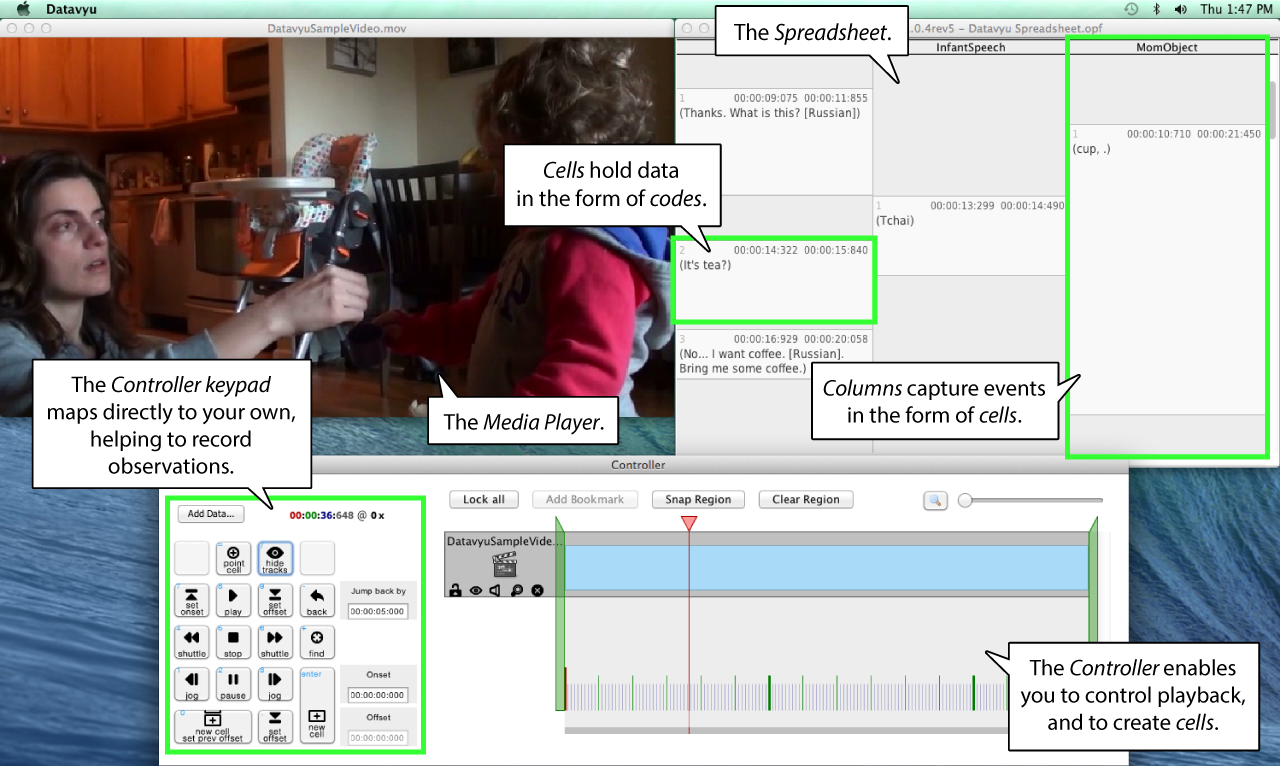2016-08-16
Curating identifiable data with Databrary
Acknowledgments
- NSF BCS-1238599
- NICHD U01-HD-076595
- Society for Research in Child Development (SRCD)
- NYU Libraries, NYU IT, IRB, and OSP
TL; DR
- Psychology is harder than physics
- Video uniquely informative about behavior
- Video is essential for reproducible science of behavior
- Even where video is not the primary raw data
- Databrary specializes in storing and sharing research video + metadata
TL; DR
- Video is identifiable, but it can be securely stored, managed, and shared
- All
behavioralscientists should collect and share videos of their research methods. - Video (+ other streams) can serve as the core of a multivariate/multi-level big data science of behavior
Why psychology is harder than physics
Why psychology is harder than physics
Video is a uniquely informative source of evidence about behavior
Is behavioral science reproducible?
- Nosek et al. (Collaboration 2015)
- vs. Gilbert et al. (Gilbert et al. 2016)
Why the dispute; what to do?
- Behavior rich, complex
Numeric, text-based measures reduce that complexity
Video captures and preserves it
Why the dispute; what to do?
- Replications can fail due to methodological differences
- Methods sections can't possibly report all essential details
- Video captures and preserves it
A reproducible behavioral science must…
- Video record all tasks, measures, and behaviors
- Share the recordings openly with other researchers
Journal of Visualized Experiments
A reproducible behavioral science must also…
- Share all questionnaires, tasks, displays
- Share statistical, computational, data workflows
- Make it easy to share from the beginning
- Seek permission to share data from participants
- Store data securely
Databrary.org
- Digital data library specialized for research video
- Video/audio + participant/context metadata
- Share displays, materials, text-based data files
- Policy framework for sharing identifiable data
- Developmental focus, but not exclusive
Databrary.org facilitates data sharing, re-use, preservation
- High capacity, centralized storage
- Transcoding to common, interoperable formats
- Long-term preservation
Databrary helps to overcomes barriers to sharing video
- Policies for sharing identifiable video data
- Tools for reproducibly coding video
- Tools for "active curation" == during data collection
- Tools for searching, filtering
Policies
- Restrict access to authorized researchers (& affiliates)
- PIs and the trainees they supervise
- Institutional access agreement
- Seek permission to share data from participants
Standardized (reproducible) release levels
Tools for coding video
- Raw research video must be coded by human observers
- Datavyu a free, open source coding tool
- Add codes, annotations time-locked to video segments
- Turn behavior into quantifiable data
- Ruby API for scripting reproducible workflows
Tools for curating data as it is collected
- After-the-fact curation burdensome
- Databrary organizes, shares, standardized participant metadata
- Sharing based on
- user access level
- participant permission
Databrary's structure
- Datasets have own page; shared datasets have DOIs.
- Data about testing sessions (locations, dates/times, people) stored in spreadsheet
- Session data organized in timeline
- Store data AND materials (displays, protocols, etc.)
(Adolph 2013)
Tools for searching, filtering by participant characteristics
"Big" questions about behavior require big(ger) data

"Big" questions about behavior require big(ger) data
- Multiple levels of spatial, temporal resolution
- Linked data sets and streams
- Key linkage variables: when (time), where (location), who (age, gender)
- Video is a spatially and temporally rich time series
How data scientists can help…
- Semi-automated video annotation
- Speech stream extraction from natural video, transcription, ms-level precision
- Multivariate time series visualization, data reduction, analysis
- Linking data, while preserving privacy
Take homes
- Video uniquely captures complexity & richness of behavior
- Video captures vital methodological details
- Identifiable video (and other data) can be shared securely and ethically
- Preparing to share reduces the burden
Take homes
- Video data sharing essential for a reproducible, robust behavioral science
- Video can serve as the core of a big data revolution in behavioral science
References
Adolph, Karen; 2013. “Infants Crawling and Walking over High and Low Bridges.” Databrary. doi:10.17910/B7MW2K.
Batra, Erich K., Douglas M. Teti, Eric W. Schaefer, Brooke A. Neumann, Elizabeth A. Meek, and Ian M. Paul. 2016. “Nocturnal Video Assessment of Infant Sleep Environments.” Pediatrics, August, e20161533. doi:10.1542/peds.2016-1533.
Collaboration, Open Science. 2015. “Estimating the Reproducibility of Psychological.” Science 349 (6251): aac4716. doi:10.1126/science.aac4716.
DeLoache, Judy. 2014. “Scale Errors Offer Evidence for a Perception-Action Dissociation Early in Life.” Databrary. doi:10.17910/B7H019.
DeLoache, Judy S., David H. Uttal, and Karl S. Rosengren. 2004. “Scale Errors Offer Evidence for a Perception-Action Dissociation Early in Life.” Science 304 (5673): 1027–9. doi:10.1126/science.1093567.
Frank, Michael C.; 2014. “Representing Exact Number Visually Using Mental Abacus.” Databrary. doi:10.17910/B7PP4W.
Gilbert, Daniel T., Gary King, Stephen Pettigrew, and Timothy D. Wilson. 2016. “Comment on ‘Estimating the Reproducibility of Psychological Science’.” Science 351 (6277): 1037–7. doi:10.1126/science.aad7243.
Jayaraman, Linda B.; Raudies, Swapnaa; Smith. 2014. “Natural Scene Statistics of Visual Experience Across Development and Culture.” Databrary. doi:10.17910/B7988V.
Wilkinson, Krista; 2014. “Preliminary Investigation of Visual Attention to Human Figures in Photographs: Potential Considerations for the Design of Aided AAC Visual Scene Displays.” Databrary. doi:10.17910/B7G59R.
Yu, Chen; 2016. “The Social Origins of Sustained Attention in One-Year-Old Human Infants.” Databrary. doi:10.17910/B7.236.
